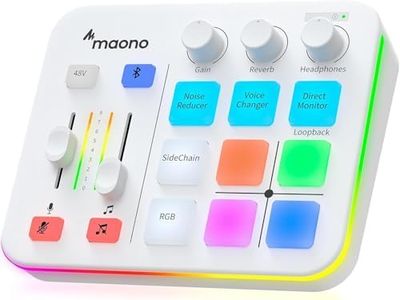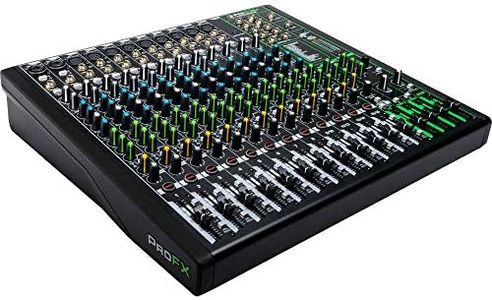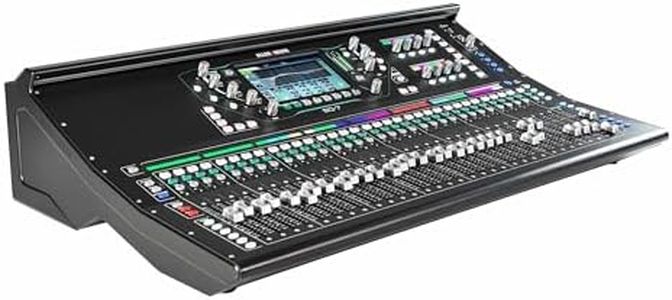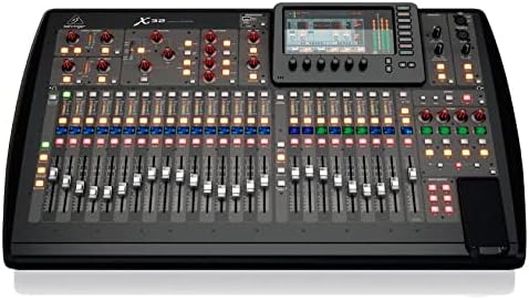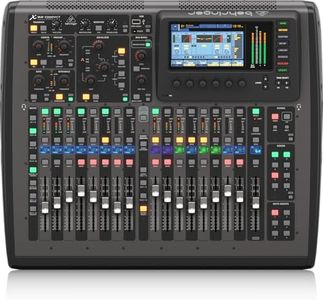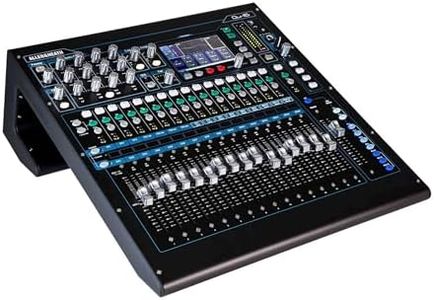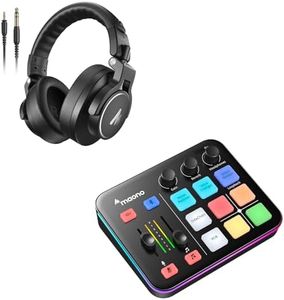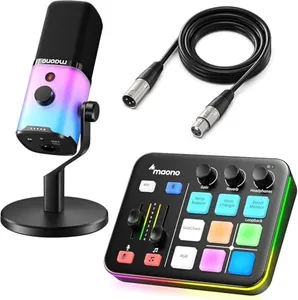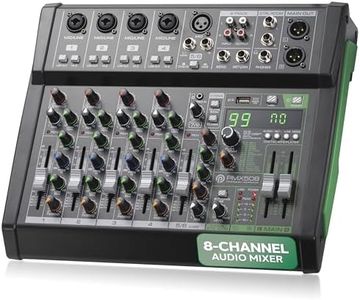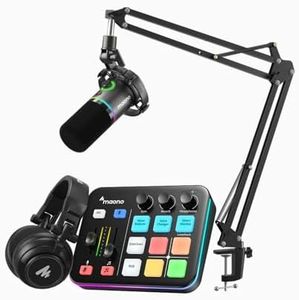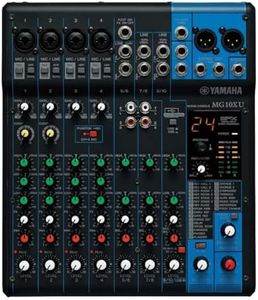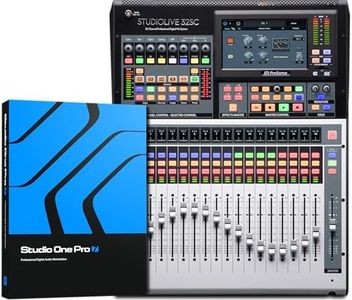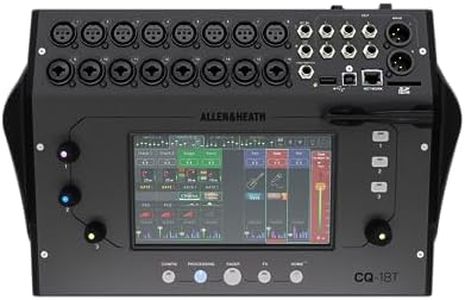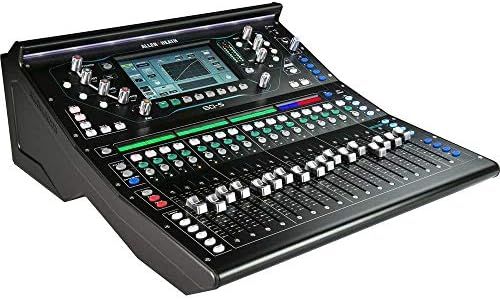10 Best Studio Mixers 2025 in the United States
Our technology thoroughly searches through the online shopping world, reviewing hundreds of sites. We then process and analyze this information, updating in real-time to bring you the latest top-rated products. This way, you always get the best and most current options available.

Our Top Picks
Winner
Mackie ProFX16v3 16-channel Mixer with USB and Effects
Most important from
2363 reviews
The Mackie ProFX16v3 is a versatile 16-channel mixer that caters to both beginners and experienced users looking for a reliable studio mixer. One of its standout features is the built-in effects, which can enhance recordings and live performances without needing additional hardware. Its USB connectivity allows for easy integration with computers, making it convenient for recording and playback. Weighing in at 15.2 pounds and featuring compact dimensions, it strikes a balance between portability and functionality, suitable for studio environments or small gigs.
When it comes to preamp quality, Mackie's reputation precedes it, and this model continues that tradition. Users appreciate the sound clarity and robustness of the preamps, which are essential for high-quality audio input. The mixer has a good range of connectivity options, including 1/4-inch audio, USB, and headphone outputs, which adds to its versatility.
There are a few drawbacks worth noting. While its size is compact, it might still be bulky for those who need extreme portability for travel. Additionally, the built-in effects, although useful, may not satisfy professional sound engineers looking for more advanced processing options. Lastly, while the mixer is user-friendly, those completely new to mixers may require some time to familiarize themselves with the controls and functionalities.
Most important from
2363 reviews
Allen & Heath SQ Series 48-Channel / 36 Bus Digital Mixer (AH-SQ-7)
Most important from
2 reviews
The Allen & Heath SQ-7 is a powerful digital mixer designed for studio and live sound use, offering 48 channels and 36 buses, which is ideal for handling complex mixing tasks with many inputs. Its digital signal processing at 96kHz ensures high audio quality and very low latency, allowing sound to be processed quickly with minimal delay, which is great for professional monitoring. One standout feature is the DEEP processing system, which enables customization of preamps and compressors with boutique-style effects directly within the mixer, providing flexibility in shaping your sound without extra gear.
Connectivity options are versatile: besides USB, you can expand the number of mic inputs using stage boxes and add networking cards like Dante or Waves to integrate with other audio systems. This makes the mixer suitable for both studio setups and larger live environments. The mixer weighs 53 pounds, so it is less portable for frequent travel or small spaces.
Excelling in preamp quality and built-in effects, the size and power requirements of the SQ-7 make it best suited for fixed studio installations or well-equipped live venues rather than casual or mobile use. For those seeking a high-end digital mixer with extensive control, excellent sound, and expansion options, the SQ-7 offers detailed sound shaping and professional connectivity.
Most important from
2 reviews
Behringer 32 40-Input 25-Bus Digital Mixing Console, Black (X32)
Most important from
358 reviews
The Behringer X32 Digital Mixer is a versatile option for those needing a comprehensive solution for studio mixing. With 40 channels, it offers substantial flexibility for handling multiple audio inputs, which is beneficial for complex recording sessions. Its digital nature means it provides more advanced features compared to analog mixers, such as the ability to save settings and automate processes. The inclusion of 32 gain-programmable mic preamps ensures high-quality audio capture, which is crucial for professional sound production.
A standout feature is its virtual FX rack, offering a range of built-in effects that can save you from needing additional external effects processors. This adds to its convenience and makes it a cost-effective option for studios that require a variety of sound enhancements. The 25 motorized faders allow for precise control and easy recall of settings, making it user-friendly in dynamic mixing environments.
The connectivity through auxiliary inputs provides flexibility in connecting various audio devices, though users should ensure compatibility with their existing equipment. It is worth noting the mixer's considerable size and weight, which might limit portability. This makes it more suitable for permanent studio setups rather than mobile or temporary ones. The 7-inch color TFT display is a helpful feature for monitoring and managing operations, though navigating complex menus might require some learning time for new users. The product's high customer rating suggests satisfaction with its performance and reliability. While it might not be ideal for those seeking a lightweight or minimalist setup, the Behringer X32 is excellent for those who need a robust and feature-rich studio mixer, especially in professional or semi-professional settings.
Most important from
358 reviews
Buying Guide for the Best Studio Mixers
Choosing the right studio mixer can significantly impact the quality of your audio production. A studio mixer is a device that allows you to combine, process, and monitor audio signals. When selecting a studio mixer, it's important to consider your specific needs, such as the type of music you produce, the size of your studio, and the number of inputs and outputs you require. Understanding the key specifications will help you make an informed decision and ensure that the mixer you choose is the best fit for your setup.FAQ
Most Popular Categories Right Now
